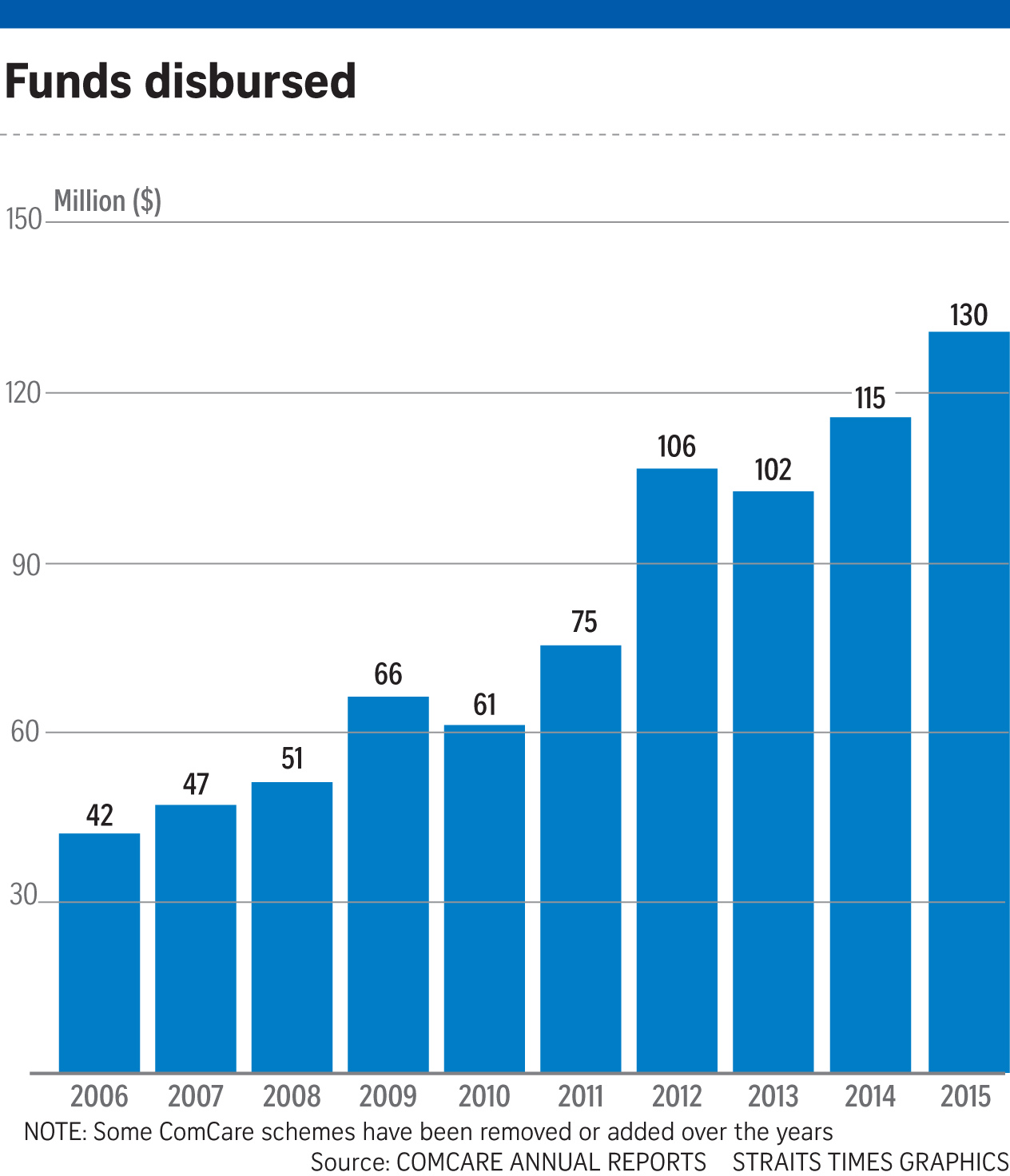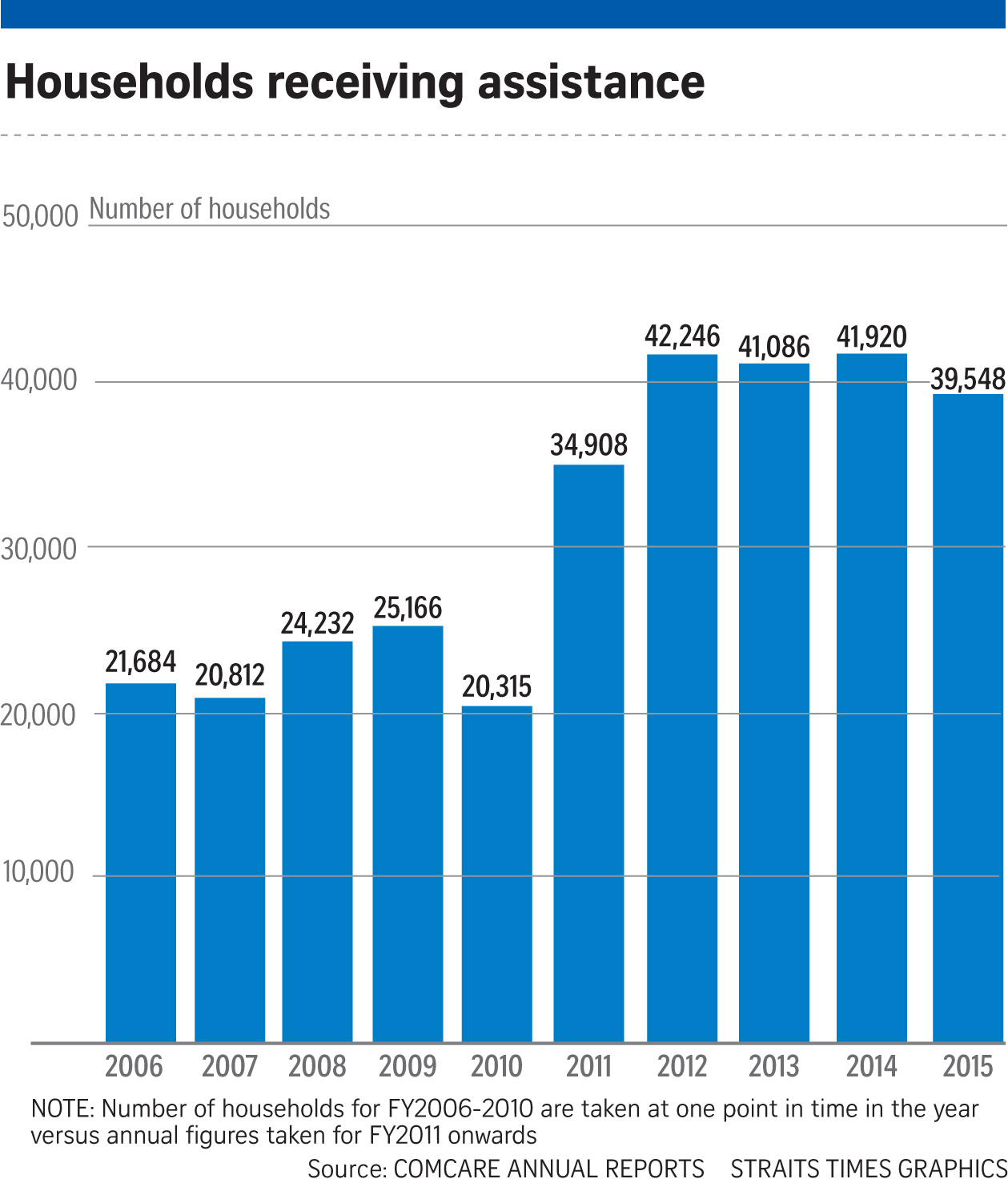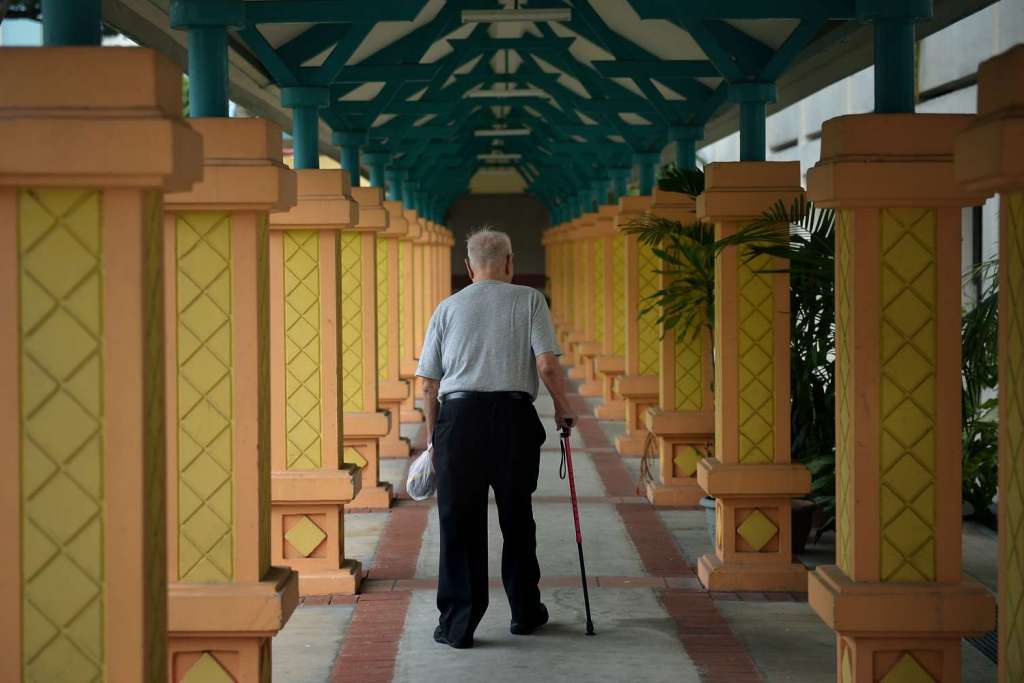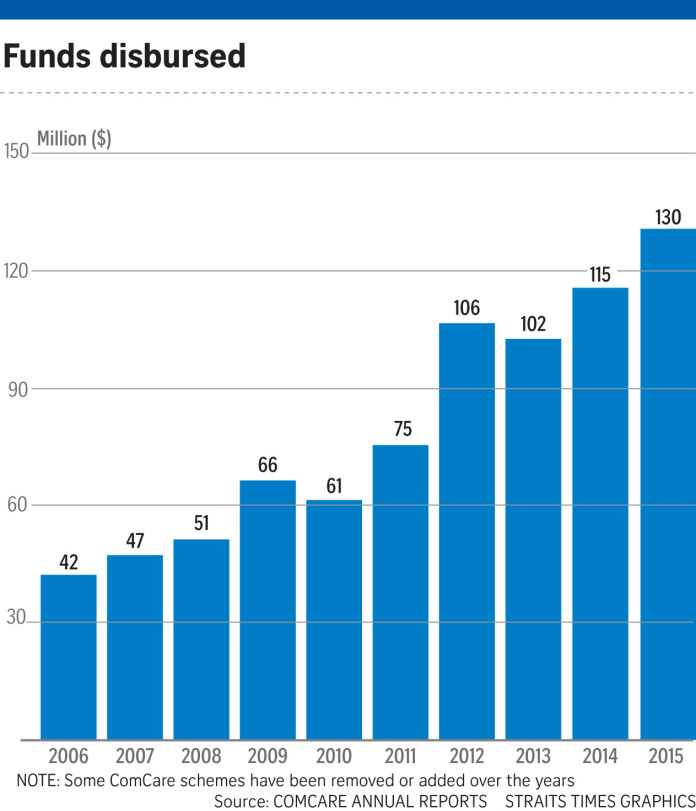Social assistance payments to the poor hit a record $130 million in the last financial year that ended in March.
This is 10 per cent higher than the year before and triple the amount of money given out a decade ago.
The money was distributed to some 40,000 households.
The money came from the Community Care (ComCare) Endowment Fund, set up by the Government in 2005 to help needy families get back on their feet.
ComCare is a key social safety net for low-income Singaporeans and provides three broad types of assistance: Long-term help, largely for the elderly poor; interim as well as short- to medium-term help for those facing crises, such as illness or retrenchment; and student care subsidies for children.

The Ministry of Social and Family Development (MSF) said the increase in the number of beneficiaries over the years can be attributed to “policy enhancements, greater accessibility to help and the economy slowdown in recent years”.
Observers put the rising amount of aid paid out to a growing number of people down to several factors.
“At first blush, the increasing numbers might seem to suggest a deteriorating social situation,” said former Nominated MP and Singapore Management University law don Eugene Tan.
“But it is more likely a combination of factors ranging from our social welfare policy being less tight-fisted, changing demographics and a more welfare-oriented approach in which short-term assistance is more readily advanced than before,” he added.
A portion of the money – $68.4 million – came from interest generated by the ComCare Endowment Fund. The rest came from the MSF’s budget.

Who received assistance
ComCare short- to medium-term assistance
• 35 per cent were aged 55 and above
• 40 per cent were married; 32 per cent were divorced, widowed or separated
• 41 per cent had primary-level education or below
• Close to half (47 per cent) lived in one- or two-room flats
• 59 per cent had households with young and/or elderly beneficiaries
ComCare long-term assistance
• 12 per cent were aged 55 to 64; 78 per cent were aged 65 and above
• 70 per cent were single; 23 per cent were divorced, widowed or separated
• 74 per cent had primary- level education or below
• 68 per cent lived in one- or two-room flats
• 63 per cent were aged 65 and above and living alone
The biggest jump last year was in short- to medium-term payouts, which rose from $68.7 million in 2014 to $87.9 million last year.
One reason could be the rise in the number of elderly people who need help (see other report).
“One trend that caught my attention is that we are seeing more households with older persons or retirees requiring social assistance. This could be due to smaller families and an ageing population,” Minister for Social and Family Development Tan Chuan-Jin wrote on Facebook yesterday.
Spending on long-term help grew to $22.7 million last year, up from $18.7 million the year before.
Associate Professor Tan said the amount of money disbursed via ComCare is likely to rise, given economic restructuring and demographic changes, with the rate of increase stabilising in the years ahead.
Some observers have described this as a government “shifting to the left”.
Associate Professor Irene Ng from the department of social work at the National University of Singapore thinks that the country’s social welfare policy is heading in the right direction.
EROSION OF SELF-RELIANCE
We do have to give more. However, it is true that the erosion of self-reliance is currently a real problem in the design of our schemes.
ASSOCIATE PROFESSOR IRENE NG from the department of social work at the National University of Singapore. She is also director of the Social Service Research Centre.
HELP FAMILIES MOVE UP
The key is to ensure that ComCare-type schemes do the best possible job of helping families ‘graduate’ from them by finding meaningful work if the recipients can work.
SIM UNIVERSITY SENIOR LECTURER WALTER THESEIRA
“We do have to give more. However, it is true that the erosion of self-reliance is currently a real problem in the design of our schemes,” said Prof Ng, who is also director of the Social Service Research Centre.
As more types of help are offered, she said, beneficiaries start to have knowledge about the schemes and some change their behaviours in order to qualify for the schemes.
Dr Mathew Mathews, senior research fellow at the Institute of Policy Studies, does not think that the increase in aid suggests that the long-held Singaporean ethos of self-reliance is waning.
“Today, there is more recognition that providing some shortterm help when a family might be facing financial difficulty, coupled with other measures such as providing retraining and childcare support, can potentially prevent the family from going on a downward spiral,” he said.
Observers said it was important to work towards helping aid recipients move out of the schemes.
“The key is to ensure that ComCare-type schemes do the best possible job of helping families ‘graduate’ from them by finding meaningful work if the recipients can work,” said senior lecturer Walter Theseira of the School of Business at SIM University.
However, he noted that families who deserve and need the help should receive it readily because it can be more harmful in the long run if the families make poor decisions about medical treatment or education because of a lack of funds.
“That is penny-wise and pound- foolish for society,” he said.

This article was first published on Dec 10, 2016.
Get a copy of The Straits Times or go to straitstimes.com for more stories.







